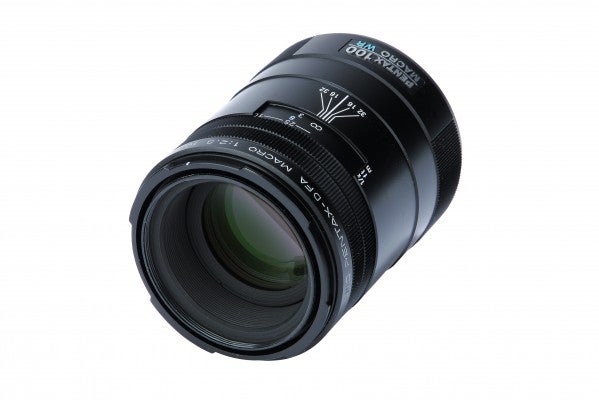We put the Pentax smc D-FA 100mm f/2.8 Macro WR to the test to find out its pros and cons
Pentax smc D-FA 100mm f/2.8 Macro WR Review
The WR lens has an almost-smooth barrel design with prominent depth-of-field markings behind the focused-distance scale. There is a manual-focus ring at the front of the lens that falls easily to hand: unfortunately, the ring rotates in AF mode so care must be taken to avoid obstructing its movement. But once focus has been found, the manual-focus ring can be used to make whatever adjustments may be necessary. Pentax calls this form of AF/MF ‘Quick-Shift’ focusing.
Being a true macro lens that is capable of a 1:1 magnification ratio, the manual-focus ring has a massive throw of some 270°. For the same reason, the front of the lens extends considerably when the lens is used at close range. If the lens hood is fitted, all of this extension (which totals about 47mm) is helpfully contained within a protective shield.
Some specifications imply that if an APS-C sensor records the same scene as a full-frame sensor then it is entitled to wear the ‘macro’ crown but that is not the case. A ‘life-size’ image is life-size regardless of the sensor size: a smaller sensor means only that a smaller area of the original subject can be captured at life-size!
Fortunately, Pentax’s lens is a genuine Macro lens and the company does not attempt to muddy the waters regarding its use with APS-C sensors. Technical testing was undertaken both at a conventional scale and close-up. Only the results of the former test are reported here as there is insufficient space to explain and discuss the latter in detail.
The results from conventional MTF testing were impressive: only wide-open did the lens drop below the critical 0.25 cycles-per-pixel threshold. This is not a problem for macro photography, where maximum aperture is unlikely to be used, and could actually be beneficial in portrait photography (the other key use for a lens of this type) as biting sharpness can be very unflattering… which is precisely why wedding photographers and others sometimes fit softening filters over their lenses!
Overall this is a lovely lens that looks good and performs very well indeed. It is also something of a bargain at under £500 for a true macro of this quality with full-frame coverage. Anybody with a interest in close-up photography should give this lens very serious consideration.





